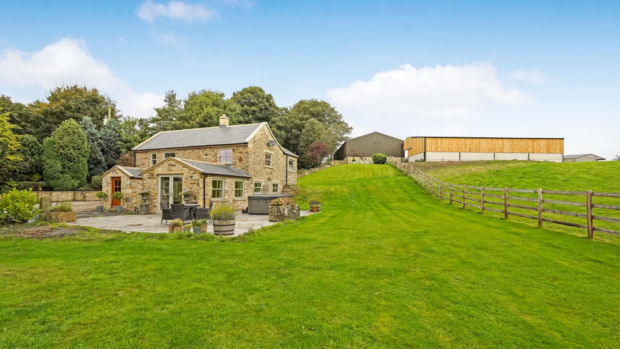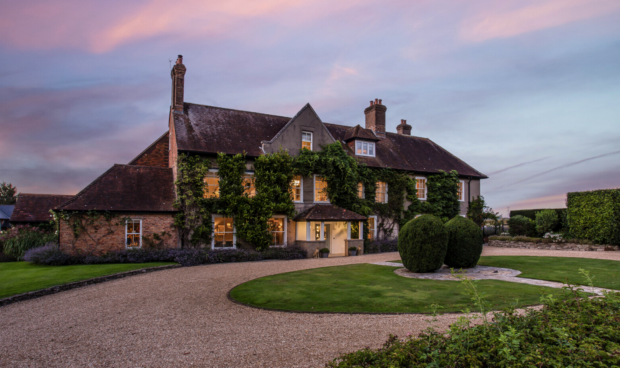In today’s issue of Horse & Hound magazine (21 June 2018) we have revealed Devon as the winner of our recent study to determine which is the horsiest county in Great Britain — compiling data across a broad spectrum of categories, from the number of polo clubs and Pony Clubs, to the amount of BHS Fellows in each county and the access to bridleways.
How we defined our boundaries
As in our 2003 and 2010 surveys, we have focused our research on the island and Great Britain and, as different authorities divide the country in different ways, amalgamated some counties to afford fairer comparison.
We have stuck as closely as possible to recognised boundaries, and while we never actually moved borders, in some cases (such as the Isle of Wight and Hampshire and some areas of Scotland and Wales) we have amalgamated regions for ease of calculation and to stay in line with our 2003 and 2010 surveys.
SCOTLAND
Strathclyde includes:
Argyll & Bute
Ayrshire
Inverclyde
Dunbartonshire
Glasgow City
North Lanarkshire
South Lanarkshire
Renfrewshire
Grampian includes:
Moray
Aberdeenshire
Aberdeen City
Tayside includes:
Angus
Perth and Kinross
Dundee City
Central includes:
Stirling
Clackmannshire
Falkirk
Lothian includes:
West Lothian
Midlothian
East Lothian
City of Edinburgh
ENGLAND
County Durham includes:
Hartlepool
Darlington
Stockon-on-Tees
Middlesbrough
Redcar and Cleveland
Lancashire includes:
Blackpool with Darwen
Merseyside
Blackpool
Cheshire includes:
Halton
Warrington
Lincolnshire includes:
Peterborough
Staffordshire includes:
Stoke on Trent
West Midlands
Shropshire includes:
Telford and Wrekin
Leicestershire includes:
Rutland
Bedfordshire includes:
Bedford
Milton Keynes
Luton
Berkshire includes:
West Berkshire
Reading
Wokingham
Bracknell Forest
Windsor and Maidenhead
Hampshire includes:
Isle of Wight
Somerset includes:
City of Bristol
Bath and North East Somerset
North Somerset
Cornwall includes:
Plymouth
WALES
Clwyd includes:
Conwy
Denbighshire
Flintshire
Wrexham
Gwent includes:
Blaenau Gwent
Torfaen
Newport
Glamorgan includes:
Swansea
Neath Port Talbot
Bridgend
Rhondda, Cynon, Taff
Cardiff
Caerphilly
Methyr Tydfil
Vale of Glamorgan
Dyfed includes:
Pembrokeshire
Ceredigion
Carmarthenshire
The categories and how our points system worked
To determine the horsiest county in Britain, we used the statistics available to us and converted them into a points system. Top points (five) have been awarded to the ‘top riders’ and ‘BHS Fellows’ categories, based on the assumption that ‘legendary riders’ base themselves in horsey hubs. Similarly, the major events category has been awarded a generous three points, as they appeal to vast audiences of horse lovers.
Eventing
Number of affiliated horse trials in each county.
Points awarded: 1 point for each affiliated horse trials
Data source: British Eventing, britisheventing.com
Showjumping
Number of venues hosting affiliated showjumping in each county.
Points awarded: 1 point for each venue
Data source: British Showjumping, britishshowjumping.co.uk
Dressage
Number of venues hosting affiliated dressage in each county.
Points awarded: 1 point for each venue
Data source: British Dressage, britishdressage.co.uk
Showing
Number of Horse of the Year Show (HOYS) and Royal International Horse Show (RIHS) qualifiers in each county.
Points awarded: 1 point for each qualifier
Data source: hoys.co.uk and hickstead.co.uk
Livery yards
Number of BHS approved livery yards in each county.
Points awarded: 1 point for each livery yard
Data source: British Horse Society, bhs.org.uk
Riding instructors
Number of ACP (accredited professional coaches) active members in each county.
Points awarded: 0.5 point for each ACP active member
Data source: British Horse Society, bhs.org.uk
BHS Fellows
Number of BHS Fellows in each county.
Points awarded: 5 points for each BHS Fellow
Data source: British Horse Society, bhs.org.uk
Riding centres
Number of BHS approved riding centres in each county.
Points awarded: 1 point for each riding centre
Data source: British Horse Society, bhs.org.uk
Hunts
Number of hunts (mounted and foot packs) active in each county.
Points awarded: 2 points for each hunt
Data source: Baily’s Hunting Directory, bailyshuntingdirectory.com
Top riders
A list was compiled of the top 10 riders in each of the Olympic disciplines, who are living in Britain, based on the current FEI rider ranking list for each sport. For showing producers and riders, a list was compiled of the HOYS supreme winners from the past five years.
Points awarded: 5 points for each top rider
Data source: FEI, fei.org
Major events
A list compiled by the Horse & Hound team, based on their expertise of the biggest events in the equestrian calendar.
Points awarded: 3 points for each major event
Data source: as determined by the Horse & Hound team
Tack shops and equine feed merchants
Number of tack shops and equine feed merchants in each county, according to the British Equestrian Trade Association (BETA).
Points awarded: 0.5 points per tack shop or feed merchant
Data source: British Equestrian Trade Association, beta-uk.org
Racecourses
Number of racecourses in each county.
Points awarded: 2 points per racecourse
Data source: The British Horseracing Authority, britishhorseracing.com
Point-to-points
Number of point-to-points in each county.
Points awarded: 1 point per point-to-point
Data source: Weatherbys point-to-point, pointtopoint.co.uk
Farriers
Number of farriers registered wit the Farriers Registration Council in each county.
Points awarded: 0.5 points per farrier
Data source: Farriers Registration Council, farrier-reg.gov.uk
Polo clubs
Number of polo clubs in each county.
Points awarded: 2 points per polo club
Data source: Hurlingham Polo Association, hpa-polo.co.uk
Riding Clubs
Number of British Riding Clubs in each county.
Points awarded:
Data source: British Horse Society, bhs.org.uk
Pony Clubs
Number of Pony Clubs in each county.
Points awarded: 1 point per Pony Club
Data source: The Pony Club, pcuk.org
Approved bridleways
Information provided by The Access and Rights of Way department of the British Horse Society. The percentage of bridleway access available against total public rights of way in a region was then calculated, taking into consideration local knowledge of area representatives. These percentages were then converted into a score and rounded up to the nearest .25% ie if 27% of access was available the region scored 2.75.
Points awarded: 1pt for every 10% of possible bridleway accessible, rounded up to the nearest 0.25%
Data source: British Horse Society, bhs.org.uk
Equine vets
Number of Royal College of Veterinary Surgeons accredited equine vets in each county.
Points awarded: 1 point per vet
Data source: Royal College of Veterinary Surgeons, rcvs.org.uk
Changes to criteria
Where possible we have limited changes to the criteria for this study from when we did it in 2003 and 2010, but due to the availability of some data not all categories have been defined in exactly the same way as previously.
2010 winner: Gloucestershire
2003 winner: Devon




